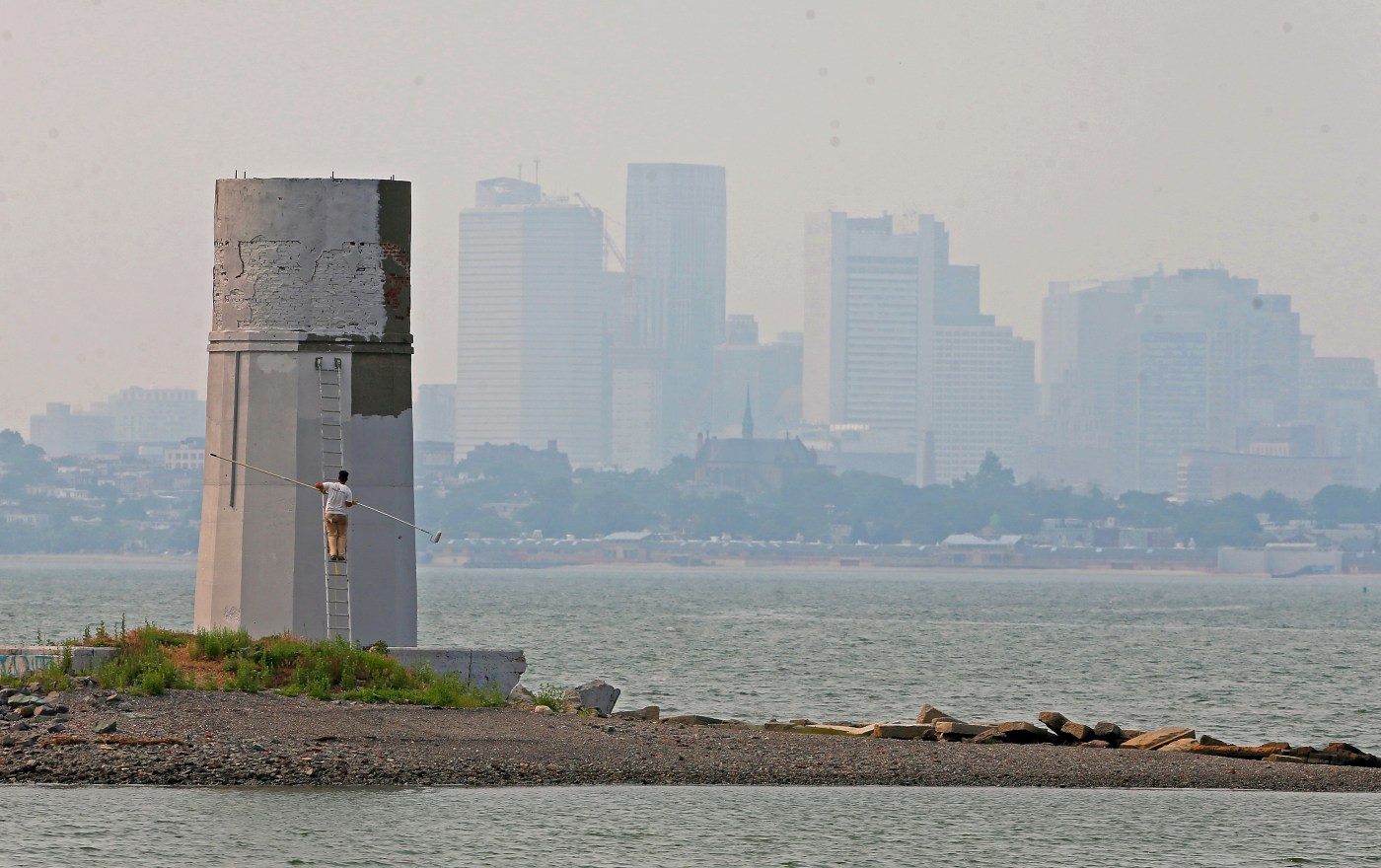
Gongloff: U.S. isn’t ready for more wildfire smoke
Many Americans were surprised last year when smoke from wildfires hundreds of miles away turned their air toxic. There’s no excuse for anybody to be surprised when it happens again — possibly in just a couple of months.
Canada’s emergency preparedness minister has warned repeatedly that an unusually dry and warm winter, combined with what might be an unusually dry and warm spring and summer, could lead to another terrible wildfire season.
It’s hard to imagine a Canadian wildfire season more explosive than last year’s, which burned a record 15 million hectares, more than seven times the annual average. Dozens of those fires kept burning through the winter, even under the cover of snow. (These are known as “zombie fires,” a phrase that joins “firenado” and “thundersnow” in the growing lexicon of freak-weather terms you wish you’d never heard.)
Where there’s fire, there’s smoke, as the saying sort of goes; and wildfire smoke will be one of the most noticeable ways climate change threatens human health in the years to come. It could cause as much as 27,800 US deaths per year by 2050, according to a new study in the National Bureau of Economic Research, with an annual economic cost of $244 billion.
Children, senior citizens and people with asthma and other underlying health issues can be harmed by relatively low concentrations of wildfire smoke. But the stuff is such a toxic stew of chemicals, delivered in particles small enough to enter the bloodstream, that even the healthiest of us should avoid it.
It caught millions off guard in New York and many other places in the eastern part of the U.S. last spring and summer, when Canadian wildfire smoke temporarily gave American cities some of the unhealthiest air on the planet.
New York officials were accused of waiting too long to warn about the danger when the smoke hit in early June, leaving people exposed and uninformed about how to respond. New York and many other cities lacked the kind of contingency plans their West Coast peers developed long ago, including protections for outdoor workers and designated places where people can go to breathe clean air.
A year later, much of the country still isn’t ready for another smoky summer. Democrats in Congress last year introduced two bills to address the problem on a national level: the Wildfire Smoke Emergency Declaration Act and the Smoke and Heat Ready Communities Act. The first would give the president power to declare a “smoke emergency,” which would open government purse strings to help relocate and shelter affected people and reimburse businesses for losses. The second would use the EPA to help communities prepare for both wildfire smoke and extreme heat, including public messaging campaigns.
Passing these bills should have happened months ago.
The easiest fix of all is for public officials to broadcast widely and often about the dangers of smoke and how to avoid it. It’s not rocket science: Shun the outside air, preferably by staying in a room with a HEPA filter; recirculate the air in your car; and wear some kind of mask, preferably an N95, when you must venture out.
Fire season is coming sooner than you might think.
Mark Gongloff is a Bloomberg Opinion editor and columnist covering climate change. /Tribune News Service


